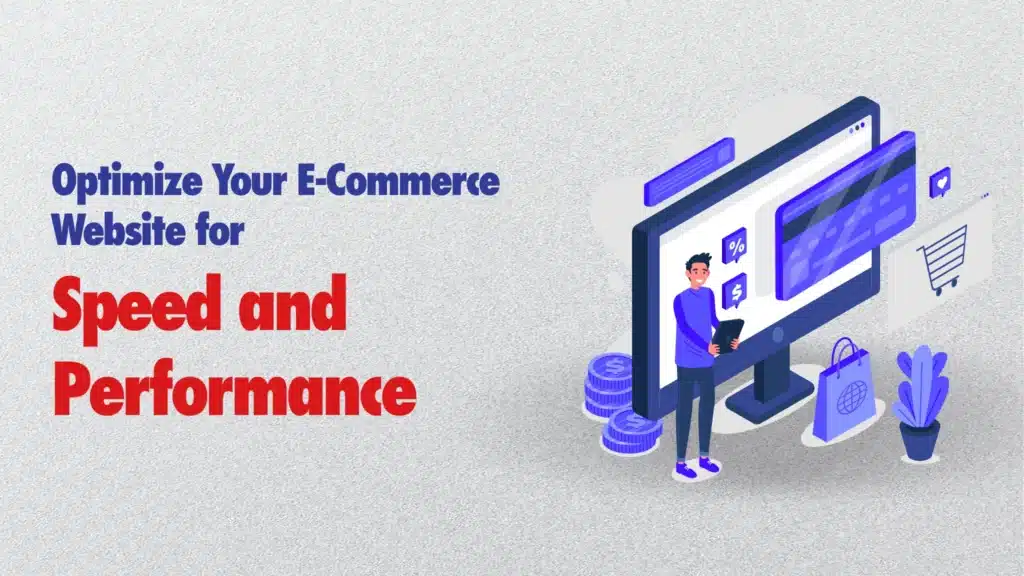How to Optimize Your E-Commerce Website for Speed and Performance

Introduction: Why Speed Matters in E-Commerce
In the fast-paced world of online shopping, every second counts. Studies show that a 1-second delay in page load time can reduce conversions by up to 7%. For e-commerce businesses, slow websites don’t just frustrate customers they directly impact sales and revenue.
That’s why website optimization is at the heart of modern e commerce development. By focusing on speed and performance, businesses can deliver seamless user experiences that encourage customers to stay, browse, and buy.
In this guide, we’ll explore practical strategies to optimize your e-commerce website for maximum performance.
1. Streamline Your Website Design
While flashy graphics and heavy animations may look appealing, they can slow down load times. Instead:
- Use clean, lightweight design elements that balance aesthetics with functionality.
- Optimize your UI/UX to reduce friction during product browsing and checkout.
- Limit the use of unnecessary plugins or third-party scripts.
A leaner design doesn’t mean sacrificing creativity it means ensuring every element adds value.
2. Optimize Images and Media Files
Product images and videos are crucial in e-commerce but can also be heavy. To optimize:
- Compress images without losing quality using tools like TinyPNG or WebP format.
- Implement lazy loading, so media files load only when visible on the screen.
- Use a content delivery network (CDN) to serve images quickly across regions.
High-quality visuals are vital, but they should never come at the expense of performance.
3. Invest in High-Performance Hosting
Your hosting provider directly impacts website speed. For growing e-commerce businesses:
- Choose dedicated or cloud-based hosting instead of shared plans.
- Look for providers with global server coverage to reduce latency.
- Ensure hosting includes scalability to handle high traffic during sales or holiday peaks.
A good hosting foundation sets the stage for consistent website performance.
4. Implement Caching Strategies
Caching stores frequently used data temporarily, reducing server requests. Types of caching include:
- Browser caching – saves static files locally on the user’s device.
- Server-side caching – reduces database load by storing dynamic content.
- CDN caching – speeds up delivery for global visitors.
Smart caching can cut load times significantly and improve user satisfaction.
5. Minimize Code and Scripts
Bulky code can slow down your website. For better performance:
- Minify CSS, JavaScript, and HTML by removing unnecessary characters.
- Combine scripts where possible to reduce server requests.
- Use asynchronous loading for third-party scripts.
This optimization is a core aspect of technical e commerce development best practices.
6. Optimize Checkout Flow
A slow checkout process is one of the biggest causes of cart abandonment. To optimize:
- Offer guest checkout to speed up purchases.
- Minimize the number of steps and form fields.
- Use trusted and fast payment gateways.
- Enable auto-fill features for returning customers.
The faster and easier the checkout, the higher the chances of conversion.
7. Monitor and Test Regularly
Website optimization is not a one-time effort. Use tools like:
- Google PageSpeed Insights – for speed analysis and recommendations.
- GTmetrix – for detailed performance reports.
- Heatmaps and A/B testing – to see how users interact with your site.
Continuous monitoring helps identify bottlenecks and ensures your site stays competitive.
8. Mobile Optimization is Non-Negotiable
With mobile commerce accounting for nearly 70% of online sales globally, optimizing for mobile is essential:
- Ensure responsive design for all devices.
- Prioritize mobile-first development practices.
- Optimize touch elements, navigation menus, and page load speed on smartphones.
Mobile shoppers are often less patient with slow websites, making mobile speed critical for growth.
9. Secure Your Website
Website security also influences performance and trust. Use:
- SSL certificates (HTTPS) to build credibility.
- Firewalls and malware protection to keep your site safe.
- Regular updates to plugins and platforms to avoid vulnerabilities.
A secure site not only loads faster but also boosts customer confidence.
Conclusion: Fast Sites Win Customers
In the competitive world of online retail, speed and performance are no longer optional they’re essential. A well-optimized site not only improves customer experience but also boosts sales, SEO rankings, and brand reputation.
By applying best practices in e commerce development, from streamlining design to adopting cutting-edge hosting solutions, your online store can stay ahead of the competition and delight customers with every click.
FAQs
Q: What’s the ideal load time for an e-commerce website?
A: Under 3 seconds is optimal. Anything beyond that risks losing potential customers.
Q: Can speed optimization improve SEO?
A: Yes. Search engines like Google factor in site speed as a ranking signal, meaning faster websites often rank higher.
Q: How often should performance be tested?
A: Ideally, conduct performance tests monthly, and always before high-traffic events like holiday sales.